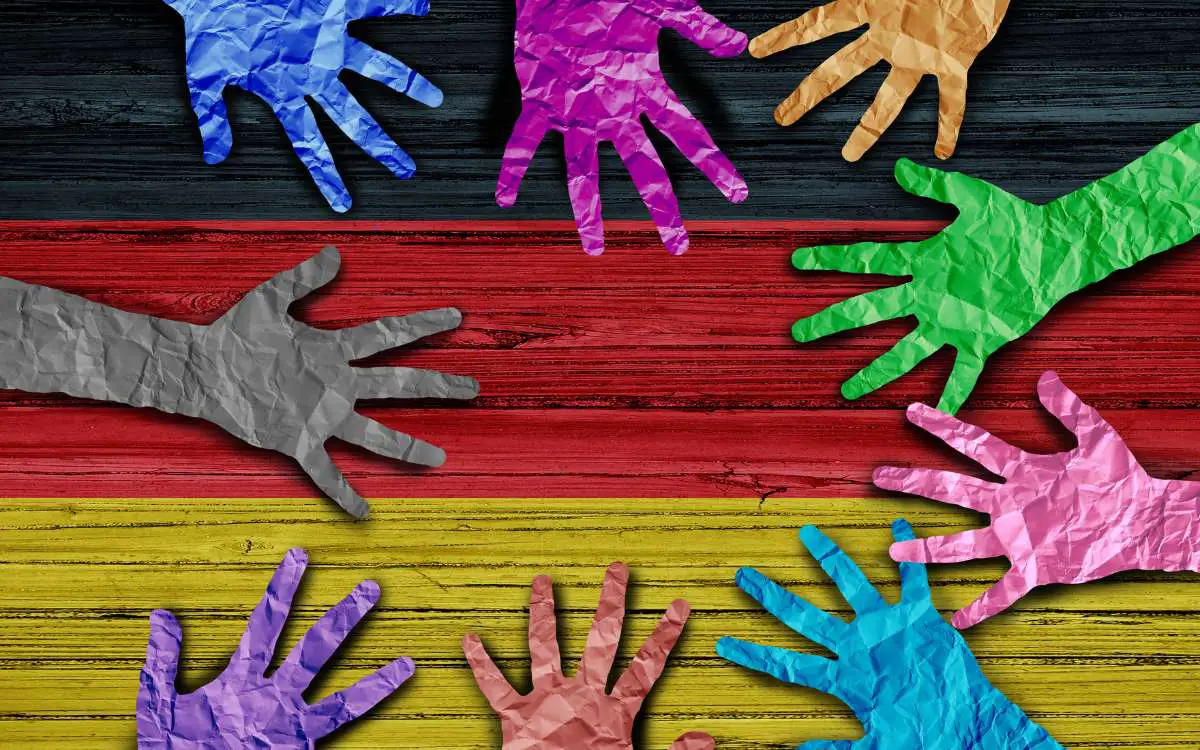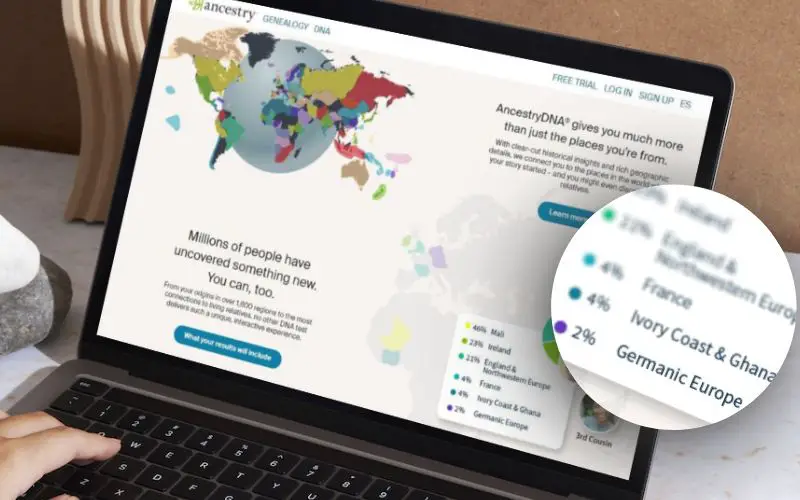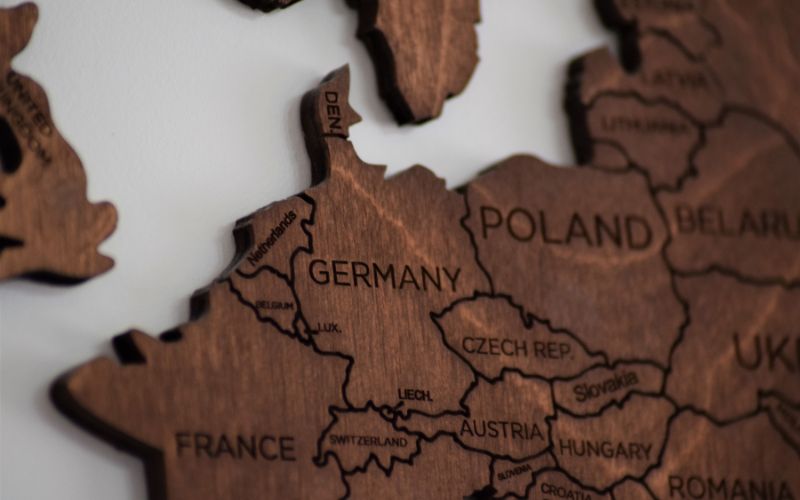The Germanic Europe DNA ethnicity is a fascinating and essential aspect of one’s ancestral identity, which AncestryDNA® seeks to uncover.
Through advancements in technology, individuals are now able to explore their Germanic heritage with greater accuracy by using DNA testing services such as AncestryDNA®.
This ethnicity encompasses a region primarily located in present-day Germany and Switzerland.
However, given the historical migrations and interactions of people in Europe, those with Germanic Europe DNA may also find links to other parts of the continent, such as England, Northwestern Europe, Eastern Europe, Russia, and Scandinavia.

By understanding the foundations of Germanic Europe DNA, individuals can gain a better appreciation of their ancestry and the various factors that have shaped their genetic makeup.
Understanding Germanic Europe DNA Ethnicity
Contents
Definition and Origins
The term Germanic Europe refers to a geographic area primarily located in present-day Germany and Switzerland.
This region has a rich and complex history shaped by various Germanic tribes throughout centuries. The Germanic Europe DNA ethnicity is offered by AncestryDNA®.
It provides individuals with insights into their heritage from the Germanic Europe region by analyzing their unique DNA.
Due to the migration patterns of people across Europe throughout centuries, those with Germanic Europe ancestry can also have ethnicity regions from other parts of Europe.
These include England, Northwestern Europe, Eastern Europe, Russia, and Scandinavia.
Germanic Tribes and Languages
Germanic tribes were the primary inhabitants of the Germanic Europe region during the early middle ages.
These tribes were independent and diverse in their cultural and linguistic practices. Some of the most prominent tribes include the Goths, Vandals, Saxons, Franks, and Lombards, among many others.
The tribes often expanded their territories through migration, conquest, and alliances with neighboring regions, directly influencing the broader landscape of European history.
The Germanic languages are a branch of the Indo-European language family.
These languages, spoken by the Germanic tribes, evolved over time into various modern languages such as German, English, Dutch, Swedish, Norwegian, and Danish.
Additionally, extinct historical languages such as Old Norse, Old High German, and Gothic were also part of the Germanic language family.
The Germanic tribes played a significant role in shaping the history and linguistic landscape of this area, leaving a lasting impact on the European continent.
Ancestry DNA and Germanic Europe

Ethnicity Estimate Process
Ancestry DNA provides an ethnicity estimate by comparing the individual’s DNA test results with a reference panel of people native to specific regions.
This helps to determine the percentage of Germanic Europe DNA ethnicity in a person’s genetic makeup.
The ethnicity estimates are rounded to whole numbers, and some smaller regions might be reported as less than 1%.
Distinct DNA Region
The Germanic Europe DNA ethnicity on Ancestry is a distinct region that encompasses parts of modern-day Germany, Switzerland, Austria, the Netherlands, and other neighboring countries.
In recent updates, Ancestry DNA has refined its ethnicity regions, assigning DNA to Germanic Europe and France instead of the larger umbrella of Western Europe.
This allows for a more accurate representation of an individual’s ethnic background.
Discovering Living Relatives
One of the benefits of taking an Ancestry DNA test is the possibility of discovering living relatives who share the same ancestral roots.
Ancestry DNA provides a list of DNA matches, which can include distant cousins or close family members.
By connecting with these individuals, one can learn more about their Germanic Europe ancestry and even potentially uncover unknown family branches.
Historical Context of Germanic Europe
Germanic Europe refers to the regions inhabited by Germanic tribes and their descendants, including parts of Eastern Europe, northwestern Europe, the British Isles, and Scandinavian countries.
The historical context of Germanic Europe is important to understand the diverse genetic makeup, culture, and history of the various Germanic-speaking peoples.
Roman Empire Encounters
During the periods of the Roman Republic and later the Roman Empire, the Romans came into contact with numerous Germanic tribes who lived in territories outside of the Roman sphere of influence.
Roman sources point out that these Germanic tribes were culturally and linguistically distinct from the Celtic tribes who inhabited large parts of northern Italy, Roman territory, and southern Gaul (today’s northern France).
Migration Period
The Migration Period, also known as the Völkerwanderung, was a time of widespread migrations of Germanic tribes from the 4th to 6th centuries AD.
These migrations were largely a result of the declining Roman Empire and pressure from the Huns, a Central Asian nomadic group.
The Germanic tribes the Goths, Vandals, and Lombards migrated southwards and westwards, entering into and often conquering large parts of the Roman Empire, which significantly influenced the genetic and cultural makeup of these areas.
Frankish Empire
One of the most significant Germanic tribes during the Migration Period was the Franks.
Under the leadership of King Clovis, the Frankish Empire expanded its influence over much of Europe, spanning from modern-day northwestern France to parts of eastern Europe.
The Frankish Empire was crucial in shaping the genetic makeup and cultural identity of many European countries, including modern-day France, Germany, and the Low Countries.
Visigothic Kingdom
Another influential Germanic tribe during the Migration Period was the Visigoths.
The Visigoths initially established their kingdom in the region of Roman Gaul, where they developed a distinct cultural and political identity.
Later, they moved to the Iberian Peninsula, where they established the Visigothic Kingdom, which would exist until the arrival of Muslim forces in 711 AD.
The Visigothic Kingdom significantly influenced the genetic and cultural development of many regions in the Iberian Peninsula.
In conclusion, the historical context of Germanic Europe played a significant role in shaping the genetic makeup, culture, and history of the various Germanic people.
From their encounters with the Roman Empire to the Migration Period and the establishment of influential kingdoms such as the Frankish Empire and Visigothic Kingdom, the descendants of these Germanic tribes continue to have a lasting impact on the modern European landscape.
Germanic Europe Today

Modern German Speaking Countries
Germanic Europe, as identified through AncestryDNA®, primarily includes Germany and Switzerland.
However, Germanic languages are also spoken in other European countries, such as Austria, Belgium, and Liechtenstein.
These countries have deep-rooted cultural and historical connections, which can be seen in their shared linguistic ancestry and similarities in customs and traditions.
In modern Germany, the Germanic Europe ancestry is evident not only through the German language but also through the country’s rich history, diverse regional identities, and well-preserved architecture.
Influence on European Regions
The Germanic influences extend beyond just German-speaking countries. Northwestern Europe, including countries like England, the Netherlands, and Denmark, has also been significantly shaped by Germanic languages and cultures.
These influences can be traced back to migratory patterns and interactions during the Early and High Middle Ages.
In Northern Germany, the flat landscape and the country’s proximity to the North Sea have played an essential role in shaping the region’s economy, social structure, and historical developments.
This area has been a hub for trade and communication, connecting the various European countries to each other and contributing to the overall success and growth of the continent.
Similarly, Germanic Europe ancestry has left its mark on numerous European regions, presenting itself in the form of dialects, cuisine, folklore, and artistic expressions.
These influences have contributed to the rich tapestry of European cultural heritage, which can still be seen and experienced today.
Through the lens of AncestryDNA®, it is evident that Germanic Europe’s legacy has spread far and wide, transcending modern borders and continuing to shape the identity of Europeans today.
Ancestry DNA Results and Interpretation
Understanding Ethnicity Estimates
Ancestry DNA results provide an ethnicity estimate, which is a comprehensive report of a person’s genetic ancestry.
The ethnicity estimate is based on comparing an individual’s DNA to a reference panel of DNA samples from various regions around the world.
The results show the percentage of DNA that matches distinct DNA regions, helping to trace the origins of one’s ancestors.
The Germanic Europe DNA ethnicity refers to the genetic ancestry of people who have roots in the Germanic-speaking regions of Europe, such as northwest Germany, Denmark, and the Netherlands.
This is a broad ethnicity region, and the results can sometimes be further refined into more specific geographic regions and sub-regions.
Refined Geographic Regions and Sub-Regions
By analyzing and comparing the DNA of people from different geographical areas, Ancestry can provide a more refined geographic region for Germanic Europe DNA ethnicity.
This is achieved through studying gene variations that are unique to certain areas and comparing them to the individual’s DNA sample.
Refined geographic regions within Germanic Europe can include northwest Germany, Denmark, the Netherlands, and surrounding areas, each with a unique combination of genetic variations and ancestry links.
These distinctions help individuals understand their connections to specific locations and the history of their ancestors.
Sub-regions can further narrow down the geographic origins of one’s Germanic ancestors, providing more detailed information on where an individual’s ancestors lived. This is especially helpful for individuals with multiple ethnicities in their DNA results.
Ancestry DNA results also provide insights into historical events and migration patterns of Germanic peoples.
For example, the Roman army’s presence in parts of Germanic Europe left traces of DNA in particular sub-regions, reflecting the genetic diversity and various connections between populations throughout history.
In conclusion, Ancestry DNA results offer a deeper understanding of one’s Germanic Europe DNA ethnicity through ethnicity estimates, refined geographic regions, and sub-regions.
By analyzing specific gene variations and comparing them to reference panels, individuals can learn more about their roots and uncover the rich history of their ancestors.
Exploring Germanic Ancestry and Personal Connections

Discovering German Roots
Germanic Europe DNA ethnicity on Ancestry encompasses a wide range of regions, from the North Sea to the Baltic Sea and the Bavarian Forest.
By exploring one’s German roots, a better understanding of their ancestors and cultural heritage can be uncovered.
Many people may find a connection to German ancestry, even if it is a very small percentage of their recent genetic makeup.
Tracing German Ancestors
Tracing one’s German ancestors can provide valuable insights into family history and personal connections to German-speaking regions.
AncestryDNA can help identify living relatives still residing in Germany, enabling users to learn more about their German family branches.
This can lead to better connections and a richer understanding of how German roots have shaped an individual’s story.
Early Germans
The term ‘Germanic’ refers to a group of peoples who occupied Central Europe and Scandinavia during ancient times and the early Middle Ages.
Julius Caesar was among the first to document these people, who are associated with Germanic languages.
While modern-day Germans can trace their roots back to these early Germanic peoples, the mixed history of invasions, migrations, and cultural exchanges throughout Europe means that an individual’s Germanic DNA ethnicity may span a much broader geographic area than Germany alone.
Understanding these historical and cultural aspects can provide a deeper insight into one’s Germanic ancestry.
What is Germanic Europe? FAQs
What is considered Germanic Europe?
According to the search results, Germanic Europe is a region located in the most northwestern part of Western Europe, bordered by France to the west, Sweden to the north, Poland and Slovakia to the east, and Croatia and Italy to the south.
Germanic Europe is a distinct DNA region and a branch of the Indo-European language family spoken by about 515 million people, mainly in Europe, North America, Oceania, and Southern Africa.
The Germanic tribes were groups of people originating from northern and central Europe during the Iron Age, sharing a common language group that is the root of all Germanic languages.
Many people with Dutch ancestry will find that some of their heritage will show up as Germanic Europe on Ancestry DNA.
What does Germanic Europe mean on ancestry?
Having Germanic Europe show up on your DNA test results is a strong indicator that some of your ancestors came from that region, but not necessarily modern-day Germany itself.
Ancestry DNA assesses that there are eight main subregions of Germanic Europe, which themselves may have several other subregions, making it quite widespread.
These subregions include Central and Northern Germany, Central and Southwest Germany, Coastal Northwest Germany, Germans from Austria-Hungary and the Don Steppe, among others.
Many people with significant Germanic Europe ancestry will also get German or German-based communities, which can help to more narrowly define where their ancestors were from
What does it mean if you are Germanic?
Being Germanic can have different meanings depending on the context.
If someone is described as Germanic, it may refer to their appearance or cultural characteristics that are associated with the Germanic peoples, who were historical groups of people that once occupied Central Europe and Scandinavia during antiquity and into the early Middle Ages.
Germanic can also refer to a branch of the Indo-European language family containing English, German, Dutch, Afrikaans, Frisian, the Scandinavian languages, and Gothic.
Finally, Germanic can refer to a DNA ethnicity region on Ancestry DNA, indicating that some of your ancestors came from the Germanic Europe region, which is located in the most northwestern part of Western Europe.
Are German and Germanic the same?
German and Germanic are not the same. German is an Indo-European language primarily spoken in Germany, Austria, and parts of Switzerland, while Germanic refers to a branch of the Indo-European language family that includes languages such as English, German, Dutch, and the Nordic languages.
The Germanic languages are further divided into three groups: West Germanic, North Germanic, and East Germanic.

